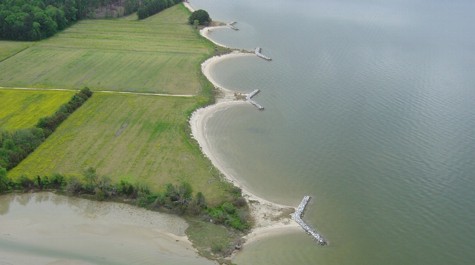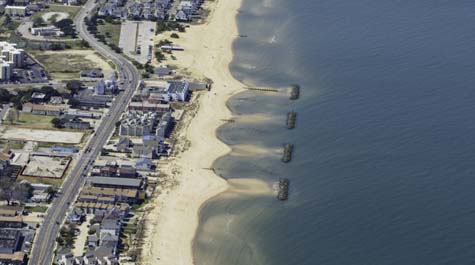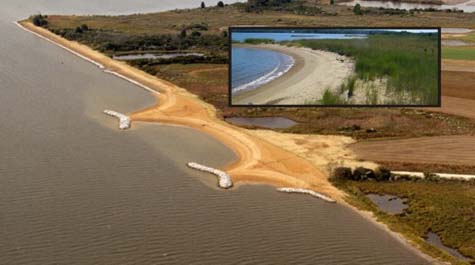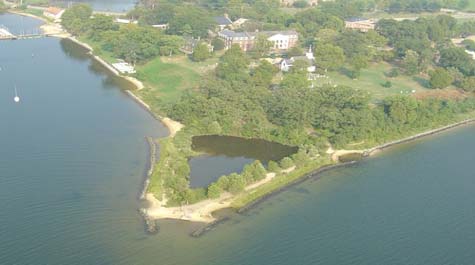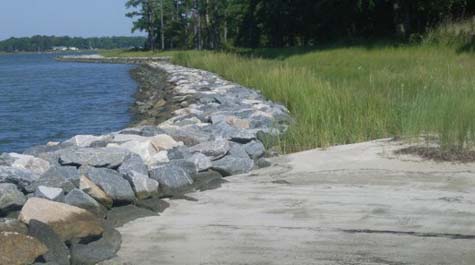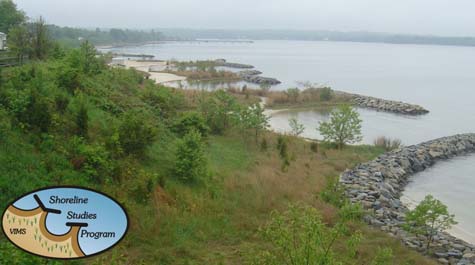Structural Living Shoreline Options
Sills
A sill is a rock structure placed parallel to the shore so that a marsh can be planted behind it. It has been used extensively in Chesapeake Bay due to the fact that these structures can be used in a wide range of habitats and energy levels. Sills create a natural buffer and preserve and/or create habitat for benthic, estuarine, shallow water, and intertidal organisms. The use of rocks in creating the sill is necessary to protect the created habitat from erosion.
The sand for the wetlands substrate is usually placed on a 10:1 slope from the base of the bank to the back of the sill. The elevation of the intersection of the fill at the bank and tide range will determine, in part, the dimensions of the sill system. However, the design can be adjusted to fit particular sites. For long sites, gaps or windows can be placed in the sill to provide access for animals and human recreation. Design and construction generally requires a trained contractor. These sites may require ongoing maintenance, particularly after storm events.
See Hardaway and Byrne (1999) for more information.
Breakwaters
Breakwaters are a series of large rock structures placed strategically offshore. Headland breakwaters maintain stable pocket beaches between the structures and a sand tombolo that attaches the structure to the shore. Detached breakwaters are placed farther offshore to allow sand to continue to be transported alongshore. The wide beaches provide most of the protection, so beach nourishment should be included as part of the strategy and periodic beach re-nourishment may be needed. Headland Control is a method of shore control where breakwater units are placed strategically along a shoreline with the understanding that the land between the structures will erode to a predicted stable bay-shape over time. This method is effective along stretches of shoreline, particularly undeveloped farmland, where more closely spaced headland breakwaters would not be cost effective.
Although single breakwaters can be used, two or more are recommended to address several hundred feet of coast. For breakwaters, the level of protection changes with the system dimensions. Larger dimensions generally correspond to bigger fetches and where a beach and dune shoreline is desired. These systems create a natural buffer and preserve and/or create habitat for benthic, estuarine, shallow water, and intertidal organisms. These systems require a trained designer and contractor because of potential downdrift impacts.
See Hardaway and Byrne (1999) for more information.
Transition Structures: Spurs
In order to minimize impacts of structures on adjacent properties, spurs are used as a transitional structure. Transition structures can vary greatly depending on site-specific conditions of the reach. They can attach to an adjacent structure such as a revetment or groin to prevent flanking. They can be shore attached to help maintain the integrity of the shore protection system while seeking to minimize disruption to the alongshore sediment transport system and downdrift erosion.

